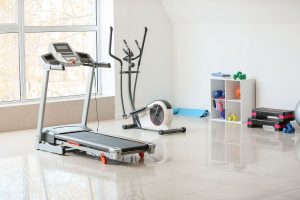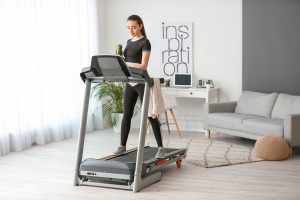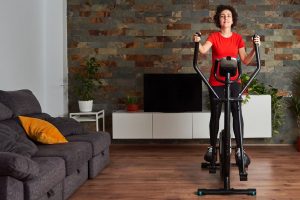
Powerlifting is a strength sport that involves lifting maximal weight in three main exercises: squat, bench press, and deadlift. It requires strength, power, and explosiveness to lift heavy loads, which is why powerlifters focus on resistance training to build muscle and increase their overall strength. However, many powerlifters overlook the importance of cardiovascular exercise in their training routines.
Cardiovascular exercise is crucial for overall health and fitness, and it can benefit powerlifters in several ways. It can improve endurance, increase work capacity, aid in recovery, and promote better cardiovascular health. The right kind of cardiovascular exercise can also improve powerlifting performance.
In this article, we will explore the best and worst cardio for powerlifters. We will examine different types of cardiovascular exercise and their benefits for powerlifters. We will also discuss the types of cardio exercises that powerlifters should avoid, as well as how to strike a balance between cardiovascular exercise and powerlifting training. By the end of this article, powerlifters will have a better understanding of how to incorporate cardio into their training routine and optimize their performance.
Table of Contents
The Importance of Cardiovascular Exercise for Powerlifters

Cardiovascular exercise provides numerous benefits for powerlifters. Some of these benefits include:
- Improved Endurance: Cardiovascular exercise can improve endurance by increasing the body’s ability to deliver oxygen and nutrients to the muscles. This allows powerlifters to perform more repetitions and sets with less fatigue.
- Increased Work Capacity: Cardiovascular exercise can increase work capacity by improving the body’s ability to tolerate and recover from high-intensity exercise. This can result in more productive training sessions and better overall performance.
- Enhanced Recovery: Cardiovascular exercise can aid in recovery by increasing blood flow to the muscles, reducing soreness, and promoting the removal of waste products. This can help powerlifters recover faster between training sessions.
- Better Cardiovascular Health: Cardiovascular exercise can improve cardiovascular health by reducing the risk of heart disease, stroke, and other chronic conditions. This is particularly important for powerlifters who often carry extra weight and put additional strain on their cardiovascular system.
Moreover, cardiovascular exercise can also improve powerlifting performance by increasing the body’s ability to generate force and power. Specifically, cardiovascular exercise can improve powerlifters’ performance by:
- Improving Blood Flow: Cardiovascular exercise increases blood flow to the muscles, which delivers oxygen and nutrients to the cells. This can improve muscle function and reduce fatigue, allowing powerlifters to lift heavier weights.
- Enhancing Recovery: Cardiovascular exercise can enhance recovery by promoting the removal of waste products and reducing inflammation. This can help powerlifters recover faster between sets and perform better overall.
- Increasing Energy: Cardiovascular exercise can increase energy levels by improving the body’s ability to produce and use energy. This can result in more explosive lifts and improved powerlifting performance.
Overall, incorporating cardiovascular exercise into a powerlifting training routine can provide numerous benefits and improve overall performance.
Best Cardio Options for Powerlifters
There are many best cardio options for powerlifters. If you are a powerlifter, you need to be more muscular enough. Cardio exercises help you to become stronger and healthier in your powerlifting period. Here are the best cardio for powerlifters and their benefits.
1. Walking/Treadmill

Walking is one of the best cardio exercises that gets your heart rate up and keeps it up for a protracted period of time. It has many practical benefits for powerlifters. On the other hand, it also improves your breathing to keep your body healthy and work harder.
Benefits
- You can do it anywhere
- Doesn’t need any equipment
- Low barrier to entry
- It is a great option for you to jump into cardio too quickly
- Low intensity
How to do it
To get the best result from walking, you have to maintain proper time. It could be at least 30 minutes as briskly as you can on most days of the week. But we would recommend you wear a fitness tracker that observes your heart rate when you go out for walking.
Choose the finest treadmill with the best shock absorption! Read our comprehensive shopping guide to choose the finest shock-absorbing treadmill.
2. Cycling/ Exercise Bike

Cycling improves your cardiovascular fitness, increases your muscle strength, strengthens your bones, and improves your joint mobility. So this cardio exercise is very effective for powerlifters.
Benefits
- Cycling is not as exhausting as other forms of cardio
- It is very easier to do
- It strengthens your knees and hips
- It can be a fun activity if you did outdoors in your house
How to do it
Cycling can be a great activity to prepare your body for powerlifting. You can cycle by a stationary bike in a gym or you can also purchase a bike on the pavement. Outdoor weather will freshen your mind.
3. Swimming

Swimming is one of the great cardio exercises to maintain a healthy life. It keeps your heart rate up but takes some of the impact stress off your body. It also builds endurance, muscle strength, and cardiovascular fitness. So this exercise prepares your body for powerlifting.
Benefits
- Low impact on your joint
- Your whole body workout
- It improves your full-body fitness
How to do it
Swimming is a great way to fit your body for powerlifting. To do it properly, find either a gym that has a pool or you can look for a community pool that allows lane swimming and spend some time in the pool. You can do a combination of front crawl, breaststroke, or back crawl for cardio too.
4. Elliptical

The elliptical machine is very useful for full-body exercise. It gives you opportunities for low-intensity cardio workouts that cover your whole upper and lower body. So using the elliptical you can get ready for powerlifting.
Benefits
- It is comfortable on the joints
- Good for low-intensity cardio workouts
- It covers your whole upper and lower body
How to do it
An elliptical is a machine found in almost all commercial gyms and has its personal model also. When you go to use the elliptical machine, you have to move its handlebars with your arms and pedals with your feet for a full-body cardio exercise.
5. Circuit Training
Circuit training is a form of body conditioning that concerns steadiness training, high-intensity aerobics, resistance training, and exercises executed in a circuit, equivalent to high-intensity interval training. It targets your strength-building and muscular endurance.
Benefits
- It is engaging and more fun than just hopping on a single machine
- You can use a variety of muscles so don’t just weaken your lower or upper body
- It is versatile and can do them anywhere
How to do it
Circuit training is a general term for choosing a few moderately simple and lightweight exercises. Circuits are used for doing back-to-back exercises for a set amount of reps or for a set amount of time.
6. Rowing
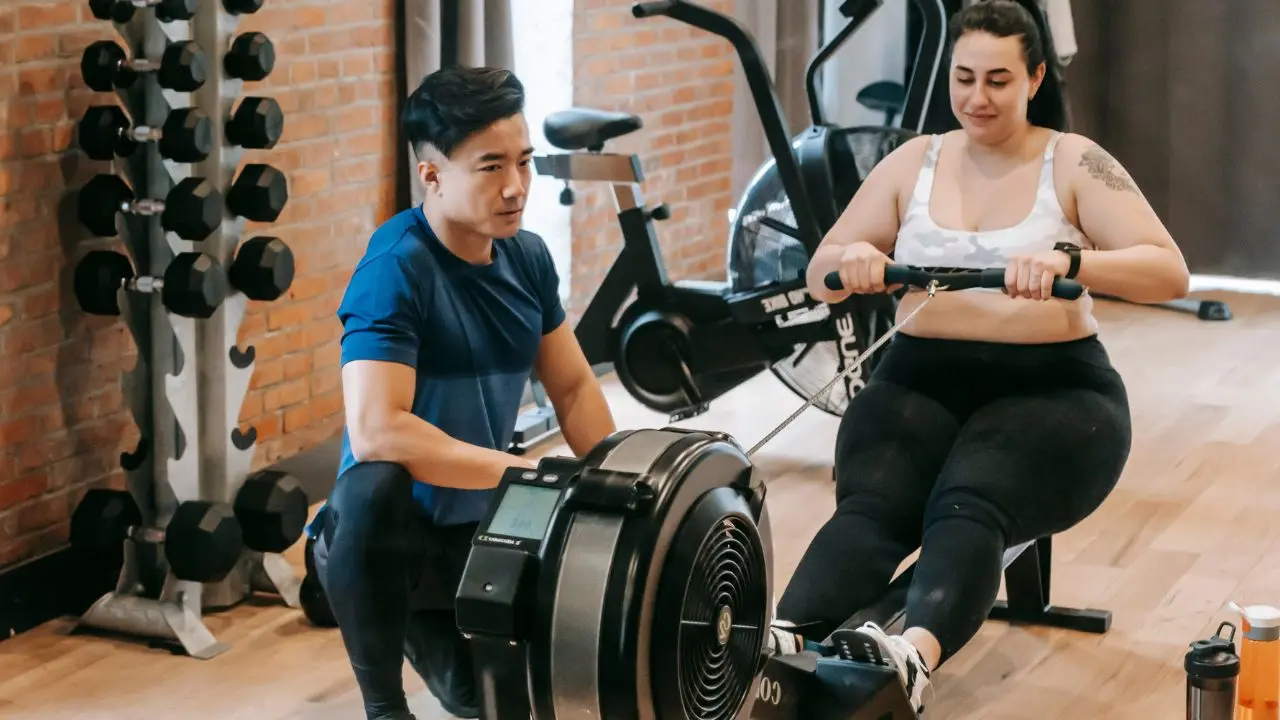
Rowing is a short workout on a rowing machine. It is very effective for your body because it is a full-body workout from the start. It activates nearly twice the muscle mass of other activities like running and cycling. A single stroke on the rowing machine works your quads, glutes, arms, hamstrings, core, and back muscles.
Benefits
- Not as taxing on your lower body
- You can focus more on your upper body
- Gets your heart rate up somewhat quickly
- Adjustable resistance
How to do it
Rowing is a machine where you sit on a seat that slides back and fronts while pulling on a handle on a chain that is attached to the front of the machine. For that, you need to push off with your legs followed by rowing the handle back. It comes with assorted levels of resistance that are adjustable.
7. Sled training
Sled training is a functional full-body exercise that targets your quads, hamstrings, chest, hip flexors, glutes, calves, core, triceps, and shoulders. Depending on your goals, you can push your sled with the tiniest weight for a longer duration on the resistance and push for a shorter distance.
Benefits
- Whole-body movement doesn’t disproportionately target one muscle group or joint
- Shorter intense bouts, less overall time commitment
- A good option for those doing cardio
How to do it
Many gyms now have a sled that can be loaded up with weight plates and pushed along the turf. The purpose of the sled is to hold on to the sled while pushing the ground away from under you with your legs and pushing the sled from one end of the turf to the other.
Worst Cardio for Powerlifter
There is some worst cardio for the powerlifter because these are high-impact cardio exercises. They provide a lot of eccentric stress and thus tissue damage. On the other hand, you know that recovery time is required after each session, particularly before performing leg workouts. So you should avoid the following exercises.
1. Battle rope training
Battle rope training is an upper-body workout. This exercise burns tons of calories and is recommended for people trying to lose weight. So, you should avoid the battle rope exercise.
2. Running
If your goal is to maximize muscle growth and strength, running can be a barrier for you to do so. It may affect your ability to recover, muscle fiber composition, and increase the risk of overtraining compared to powerlifting alone.
Discover the enjoyment of engaging in these exhilarating workouts to enhance your cardiovascular health and general fitness. Explore why these substitutions surpass running as a preferred method for achieving better health.
3. Jump rope
Jumping rope is a great exercise to get your heart rate up and calorie burn because it works all the major muscle groups of your body. But it may be the cause of leg injuries for the powerlifters. Besides, it burns calories as well. So, you should avoid jumping rope.
4. Jumping jack
Jumping Jack is a full-body cardio workout. When you perform the exercise, it creates stress on your lower body, especially on your knee and ankle. Most of the time it may be the cause of the injuries for the powerlifters. So, you shouldn’t do this exercise as soon as possible.
Why Should You Choose an Elliptical for Powerlifting
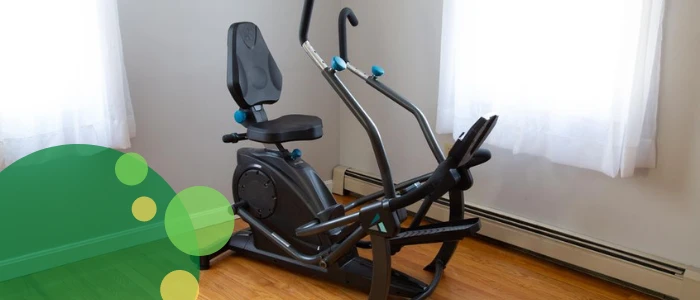
The elliptical is one of the best versatile cardio equipment. It has many workout options which make your body capable of powerlifting. Using the machine you can boost your cardiovascular health and improve your cardio stamina very easily.
You know that balance and mobility are significantly important for controlling falls and injuries and enhancing flexibility and skillfulness. You can gain balance and mobility using an elliptical machine because it is very good for conditioning your body. Thus it boosts your immunity and reduces the risk of diseases.
On the other hand, an elliptical machine also gives you an integrated full-body workout. Elliptical cardio workouts improve your body muscles and also tone your body parts with regular use.
However, you can feel an enjoyable workout with the rhythmic movements of your legs and arms. You can also listen to music and even watch a show or a match while on the elliptical.
Finding the Right Balance
While cardiovascular exercise can provide many benefits to powerlifters, it is essential to find the right balance between cardiovascular exercise and powerlifting training. Too much cardio can negatively impact powerlifting performance by reducing strength and power. On the other hand, not enough cardio can result in reduced endurance and work capacity. Here are some tips for incorporating cardio into a powerlifting routine without negatively impacting performance:
- Choose the Right Type of Cardio: Low-intensity steady-state (LISS) cardio, high-intensity interval training (HIIT), and conditioning workouts are all effective forms of cardio for powerlifters. Choose the type of cardio that aligns with your goals and preferences.
- Schedule Cardio Workouts Wisely: Plan your cardio workouts strategically to avoid negatively impacting your powerlifting training. For example, you could schedule cardio workouts on non-training days or after your powerlifting workout.
- Monitor Your Progress: Keep track of your cardio workouts and monitor how they impact your powerlifting performance. Adjust your cardio routine as needed to optimize your overall training.
- Fuel Your Body Properly: Make sure to fuel your body with the right nutrients to support both your cardio and powerlifting workouts. Adequate protein, carbohydrates, and healthy fats are all essential for optimal performance.
By finding the right balance between cardiovascular exercise and powerlifting training, powerlifters can optimize their overall performance and reap the benefits of both types of training.
Final Verdict
In summary, powerlifters can benefit from incorporating cardiovascular exercise into their training routine to improve endurance, work capacity, recovery, and cardiovascular health. However, it is important to find the right balance between cardio and powerlifting training for optimal performance.
To incorporate cardio into a powerlifting routine without negatively impacting performance, powerlifters should start slowly, choose the right type of cardio, schedule workouts wisely, monitor progress, and fuel their bodies properly.
By finding the right balance between cardiovascular exercise and powerlifting training, powerlifters can optimize their overall performance and achieve better health and fitness.


